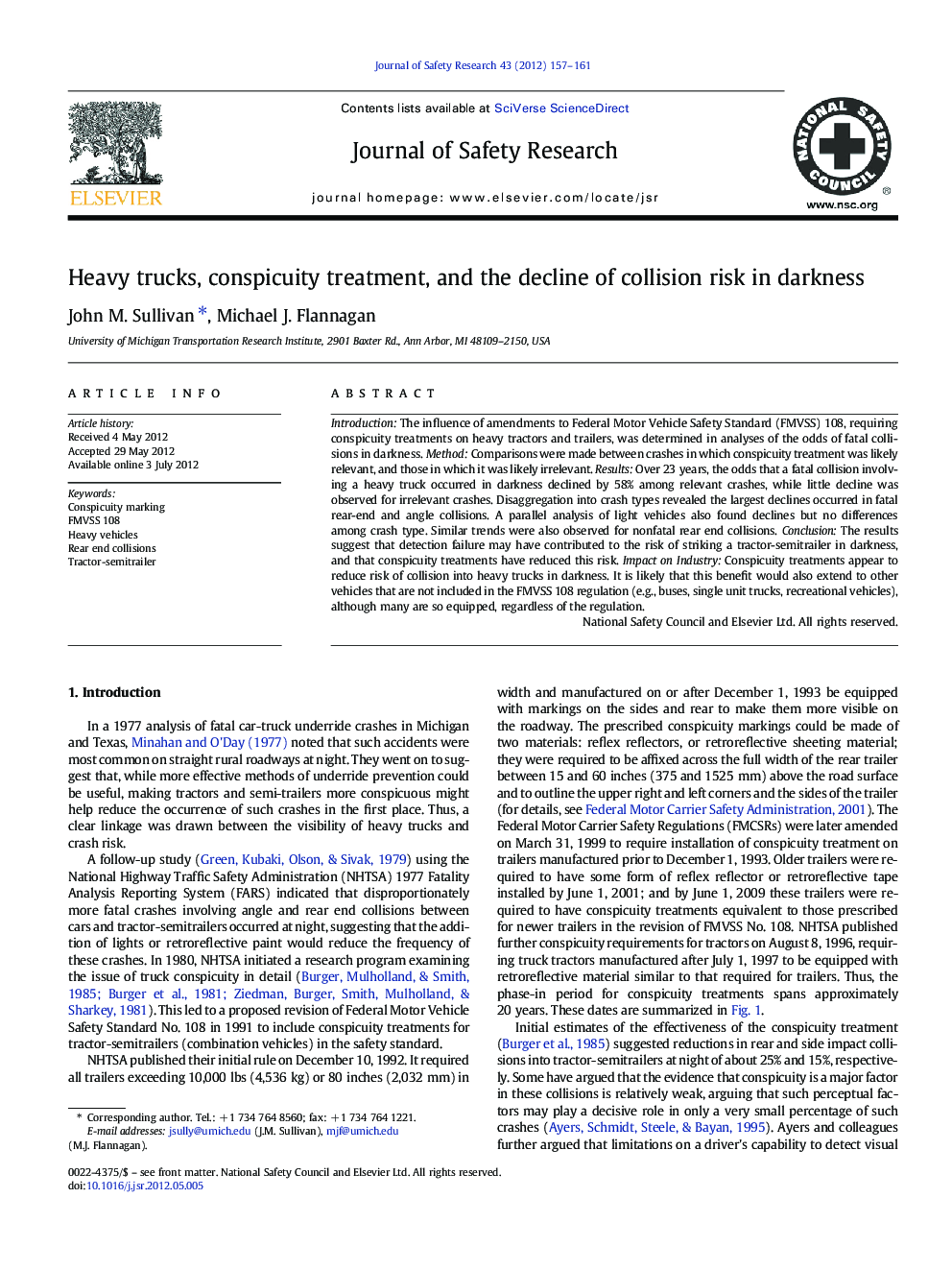| Article ID | Journal | Published Year | Pages | File Type |
|---|---|---|---|---|
| 587647 | Journal of Safety Research | 2012 | 5 Pages |
IntroductionThe influence of amendments to Federal Motor Vehicle Safety Standard (FMVSS) 108, requiring conspicuity treatments on heavy tractors and trailers, was determined in analyses of the odds of fatal collisions in darkness.MethodComparisons were made between crashes in which conspicuity treatment was likely relevant, and those in which it was likely irrelevant.ResultsOver 23 years, the odds that a fatal collision involving a heavy truck occurred in darkness declined by 58% among relevant crashes, while little decline was observed for irrelevant crashes. Disaggregation into crash types revealed the largest declines occurred in fatal rear-end and angle collisions. A parallel analysis of light vehicles also found declines but no differences among crash type. Similar trends were also observed for nonfatal rear end collisions.ConclusionThe results suggest that detection failure may have contributed to the risk of striking a tractor-semitrailer in darkness, and that conspicuity treatments have reduced this risk.Impact on IndustryConspicuity treatments appear to reduce risk of collision into heavy trucks in darkness. It is likely that this benefit would also extend to other vehicles that are not included in the FMVSS 108 regulation (e.g., buses, single unit trucks, recreational vehicles), although many are so equipped, regardless of the regulation.
► Odds of a fatal collision with a heavy truck in darkness declined 58% over 23 years. ► Strongest declines found for rear-end and angle collisions. ► Similar trends observed for nonfatal collisions.
